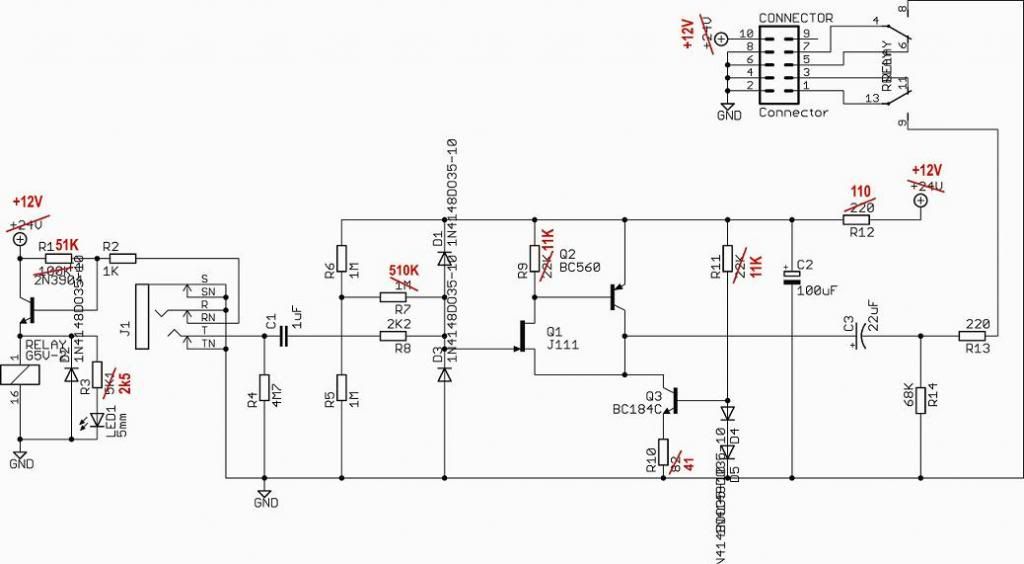Hello all,
I'm needing to do a pair of FET DI for my SSL9K preamp, and reach Igor's Fet DI and go between.
Since his FET DI are no long available on his store, I did into make one by myself, based on Igor's design... My problem is that his DI works with +24V and I need +12V... so I made some resistors changes and I appreciate that you comment this modifications and some issues about changing that.

Thanks a lot!
Ed
I'm needing to do a pair of FET DI for my SSL9K preamp, and reach Igor's Fet DI and go between.
Since his FET DI are no long available on his store, I did into make one by myself, based on Igor's design... My problem is that his DI works with +24V and I need +12V... so I made some resistors changes and I appreciate that you comment this modifications and some issues about changing that.

Thanks a lot!
Ed

































